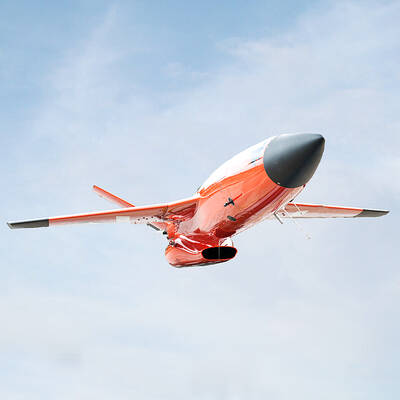Two US warships sailed through the Taiwan Strait on Sunday, the seventh such transit since July last year, the Ministry of National Defense confirmed yesterday.
The two US Navy vessels entered the Strait from the southwest, heading north, the ministry said in a statement, without naming the warships.
The US ships freely passing through the Strait is part of the Indo-Pacific strategy, the ministry said, adding that the military monitored the transit and is fully knowledgeable about it.
The two destroyers were identified as the USS William P. Lawrence and the USS Stethem, a Reuters report earlier in the day said.
The ships’ passage through the Strait demonstrates the US’ commitment to a free and open Indo-Pacific, Reuters said, quoting a statement from the US Pacific Fleet.
The destroyers USS Mustin and USS Benfold on July 7 last year sailed through the Taiwan Strait. They were followed by the guided-missile destroyer USS Curtis Wilbur and the Ticonderoga-class guided-missile cruiser USS Antietam on Oct. 22, and the destroyer USS Stockdale and the replenishment oiler USNS Pecos on Nov. 28.
The Arleigh Burke-class destroyer USS McCampbell and fleet replenishment oiler the USNS Walter S. Diehl on Jan. 24 traversed the Taiwan Strait.
The destroyer USS Stethem and supply ship USNS Cesar Chavez on Feb. 24 transited the Strait, while the guided-missile destroyer USS Curtis Wilbur and the maritime security cutter USS Bertholf sailed through on March 24.
On April 6, the French frigate Vendemiaire passed through the 180km-wide Strait, a rare transit by a vessel from a European country.
President Tsai Ing-wen (蔡英文) on Thursday said that the Taiwan Strait is international waters and all types of vessel regularly pass through it.
The military has “overall and precise” information regarding all vessels that pass through the waterway, regardless of whether they are military or civilian vessels, she added.
Following the Vendemiaire’s passage, China notified France that it was no longer invited to last week’s naval parade marking the 70th anniversary of the Chinese People’s Liberation Army Navy (PLAN), Reuters reported, citing unnamed US officials.
Lu Li-shih (呂禮詩), a retired navy lieutenant commander, said that Sunday’s passage was different from others because the two vessels turned on their automatic identification system (AIS), allowing them to be monitored on the app MarineTraffic, which displays near real-time positions of ships and yachts worldwide.
According to the International Convention for the Safety of Life at Sea, it is not mandatory for vessels used for official and military purposes to have their AIS on at all times, Lu said, adding that in the past, the US only disclosed passages through the Taiwan Strait in a press release.

CROSS-STRAIT COLLABORATION: The new KMT chairwoman expressed interest in meeting the Chinese president from the start, but she’ll have to pay to get in Beijing allegedly agreed to let Chinese Nationalist Party (KMT) Chairwoman Cheng Li-wun (鄭麗文) meet with Chinese President Xi Jinping (習近平) around the Lunar New Year holiday next year on three conditions, including that the KMT block Taiwan’s arms purchases, a source said yesterday. Cheng has expressed interest in meeting Xi since she won the KMT’s chairmanship election in October. A source, speaking on condition of anonymity, said a consensus on a meeting was allegedly reached after two KMT vice chairmen visited China’s Taiwan Affairs Office Director Song Tao (宋濤) in China last month. Beijing allegedly gave the KMT three conditions it had to

STAYING ALERT: China this week deployed its largest maritime show of force to date in the region, prompting concern in Taipei and Tokyo, which Beijing has brushed off Deterring conflict over Taiwan is a priority, the White House said in its National Security Strategy published yesterday, which also called on Japan and South Korea to increase their defense spending to help protect the first island chain. Taiwan is strategically positioned between Northeast and Southeast Asia, and provides direct access to the second island chain, with one-third of global shipping passing through the South China Sea, the report said. Given the implications for the US economy, along with Taiwan’s dominance in semiconductors, “deterring a conflict over Taiwan, ideally by preserving military overmatch, is a priority,” it said. However, the strategy also reiterated

‘BALANCE OF POWER’: Hegseth said that the US did not want to ‘strangle’ China, but to ensure that none of Washington’s allies would be vulnerable to military aggression Washington has no intention of changing the “status quo” in the Taiwan Strait, US Secretary of Defense Pete Hegseth said on Saturday, adding that one of the US military’s main priorities is to deter China “through strength, not through confrontation.” Speaking at the annual Reagan National Defense Forum in Simi Valley, California, Hegseth outlined the US Department of Defense’s priorities under US President Donald Trump. “First, defending the US homeland and our hemisphere. Second, deterring China through strength, not confrontation. Third, increased burden sharing for us, allies and partners. And fourth, supercharging the US defense industrial base,” he said. US-China relations under

The Chien Feng IV (勁蜂, Mighty Hornet) loitering munition is on track to enter flight tests next month in connection with potential adoption by Taiwanese and US armed forces, a government source said yesterday. The kamikaze drone, which boasts a range of 1,000km, debuted at the Taipei Aerospace and Defense Technology Exhibition in September, the official said on condition of anonymity. The Chungshan Institute of Science and Technology and US-based Kratos Defense jointly developed the platform by leveraging the engine and airframe of the latter’s MQM-178 Firejet target drone, they said. The uncrewed aerial vehicle is designed to utilize an artificial intelligence computer